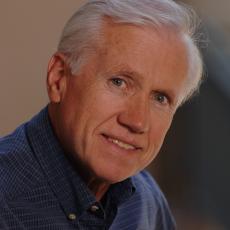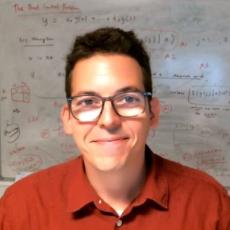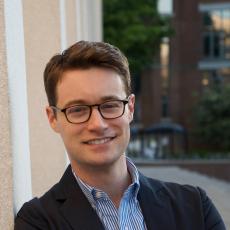There are no agendas for this day.
There are no agendas for this day.

June 8 at 1:00pm
Firms' Organizations and the Minimum Wage
Nicholas Lawson *13
Université du Québec à Montréal
Abstract
Labour economists have studied minimum wages for decades, but overwhelmingly with a focus on its effects on employment; there has been very little work about the effect of minimum wages on the organization of the firm. We analyze the effects of minimum wages on the hierarchical organization of labour within the firm. In our empirical analysis, we combine the French DADS data with a novel empirical strategy based on a unique source of variation in minimum wages during the transition to the 35-hour week in 1998-2006. We show that higher minimum wages are associated with smaller firms with fewer layers in their hierarchy, but also higher levels of productivity. We then calibrate and simulate a model of hierarchical firms to show that these empirical findings are consistent with the profit-maximizing organization of knowledge within firms.
Favorite Section memory:
Although my research - then and now - has been more theoretical than is typical for the IR Section, being surrounded by people who were innovators in empirical strategies and questions of identification made me a better economist...and, unexpectedly, a good teacher of econometrics.

June 8 at 1:15pm
Work & the Poor
Lisa Barrow *99
Federal Reserve Bank of Chicago
Favorite Section memory:
Drinking coffee/tea and discussing research ideas with Cecilia Rouse and David Card around the section counter in Firestone Library!
June 8 at 1:30pm
The Perverse Effect of Flexible Work Arrangements on Informality
Giovanni Mastrobuoni *06
Collegio Carlo Alberto, University of Turin, CEPR, IZA
Abstract
Flexible work arrangements, which are on the rise in many countries, allow for quick labor demand adjustments and are seen as a way to discourage undeclared work. In 2008, Italy introduced one of the most flexible alternative work arrangements: labor vouchers.
Using random timing in labor inspections, as well as the abolition of labor vouchers, we show that badly designed alternative work arrangements disrupt the work of labor inspectors, allowing firms to increase the amount of undeclared work. Firms who use vouchers for this purpose are shown to hire more regular part-time and fixed-term workers when vouchers become unavailable.

June 8 at 1:45pm
The Declining Growth in the Well-Being of the Average American Manufacturing Production Worker in the Twentieth Century
John Pencavel *69
Stanford University
Abstract
Why have the real wages of American manufacturing production workers risen over the twentieth century? Why have their working hours fallen? Using annual observations on the average hourly compensation and average weekly hours of work of these workers, explanations are sought
for the movements in real wages and working hours of these workers that involve changes in labor productivity, in trade unionism, and in statutory legislation.

June 8 at 2:15pm
The Impact of Immigration on Firms and Workers: Insights from the H-1B Lottery
Mingyu Chen *19
IZA Institute of Labor Economics
Abstract
We study how random variation in the availability of highly educated immigrants impacts firm performance and recruitment behavior. To do so we combine two rich data sources: 1) the Longitudinal Employer-Household Dynamics (LEHD), an employer-employee matched data set from the US Census Bureau, and 2) firm-level information on the large-scale 2007 and 2008 H-1B visa lotteries. Using an event-study approach, we find that lottery wins induce temporary increases in a firm's college-educated immigrant workforce but permanent increases in revenues and labor productivity. We do not find evidence that H-1B immigrants crowd out workers at the firm level.
Favorite Section memory:
What I learned from faculties, peers, and visitors at the IR Section shaped how I conduct empirical research and think about economics and causal inference. My favorite moments include hearing about stories of former students/faculties and how they come up with their famous papers in the common space and doing push up challenges with graduate students and RA's.

June 8 at 2:30pm
Are Hot and Cold Temperatures a Job Disamenity?
Global Evidence and Implications for Climate Change
Michael Greenstone *98
University of Chicago

June 8 at 2:45pm
Can the Low-Carbon Transition Energize Labor Markets? Evidence from Wind Electricity Investments in the U.S.
Olivier Deschenes *01
University of California, Santa Barbara
Abstract
Most western countries have made commitments or enacted policies aiming to transform their economies to become carbon-neutral by 2050. Many of the proposed policies to reduce carbon emissions are also promoted as engines of job creation and local economic development. While low-carbon transition policies continue to be debated and proposed, none have been implemented for a long enough period of time to permit an empirical evaluation of their impact.
This paper uses the natural experiment provided by the rapid deployment of wind electricity projects in the United States over the period 2000-2019 to shed light on whether the low-carbon transition can deliver long-lasting and high-quality jobs. We compile detailed data on the location and operation date of 55,000 wind turbines, combined with county-level data on employment and earnings to estimate the impact of wind projects on employment rates and earnings. The empirical analysis points to a small, but durable positive effect of wind electricity investments on local labor market outcomes. Overall, the results suggest that the deployment of 100 GW of wind electricity production capacity over the last two decades created close to 150,000 jobs.

June 8 at 3:00pm
Immigration Enforcement and Public Safety
Elisa Jácome *21
Northwestern University
Abstract
This paper studies the impact of immigration enforcement on both public safety and victim willingness to contact the police. While heightened immigration enforcement may improve safety by incapacitating serious offenders, safety may suffer if victims are unwilling to report crime. We examine the Secure Communities program, which increased cooperation between local law enforcement and federal immigration authorities and significantly increased the volume of detentions and deportations of unauthorized migrants. Using survey data from the U.S. Census Bureau, we find that Hispanic individuals are more likely to become victims of a crime after the program's introduction, and that Hispanic individuals who are victims of a crime are less likely to report their incident to the police. These two opposing effects result in a null impact of the program on reported crime, explaining previous studies' findings that this program did not alter reported crime rates. We also find no corresponding increase in victimization or decline in reporting among non-Hispanic individuals. We provide evidence that the decline in Hispanic reporting is a key channel driving their increased victimization. Our findings shed light on the importance of directly measuring victim reporting practices for understanding the impact of criminal justice policies.

June 8 at 3:15pm
Intergenerational Income Transmission among the 1.5 Generation in Canada: The Role of Age at Immigration
Marie Connolly *07
University of Quebec in Montreal
Abstract
In this paper, we exploit intergenerationally-linked tax files and Census data to first document the intergenerational income transmission between individuals who immigrated to Canada as children—the 1.5 generation—and their parents. We find that the correlation between parental income rank and child income rank becomes stronger the older the child is at arrival. We then try to get at the causal effect of the age at immigration by estimating a model in which child rank is explained by interactions between age at arrival and the average predicted rank of second-generation immigrants from the same region of origin, living in the same region in Canada, from the same birth cohort, given their parental income. The model gives us the rate at which children from the 1.5 generation catch up to second-generation immigrants. We find that up to age 10, the relation between age at immigration and income is flat, but starting at age 11, each year is associated with 3.3 fewer percentile ranks.
Favorite Section memory:
Back before the age of cloud computing and file syncing using Dropbox, at the Section we had a server (alfa?) that we could connect to remotely, store our files on, and run computer code. It was very useful and state-of-the-art! But I think what I remember most fondly is the intimacy of the old Section in Firestone, the proximity with professors and other grad students, and the support from everyone. That, and the many lunches at Prospect House with seminar speakers, with the crab cakes always "a great choice." A treat for a grad student!
June 8 at 3:30pm
Measuring and Mitigating Racial Disparities in Tax Audits
Jacob Goldin *15
University of Chicago Law School
Abstract
Government agencies around the world use data-driven algorithms to allocate enforcement resources. Even when such algorithms are formally neutral with respect to protected characteristics like race, there is widespread concern that they can disproportionately burden vulnerable groups. We study differences in Internal Revenue Service (IRS) audit rates between Black and non-Black taxpayers. Because neither we nor the IRS observe taxpayer race, we employ a novel partial identification strategy to estimate these differences. Despite race-blind audit selection, we find that Black taxpayers are audited at 2.9 to 4.7 times the rate of non-Black taxpayers. The main source of the disparity is differing audit rates by race among taxpayers claiming the Earned Income Tax Credit (EITC). Using counterfactual audit selection models, we find that maximizing the detection of underreported taxes would not lead to Black taxpayers being audited at higher rates. In contrast, certain policies tend to increase the audit rate of Black taxpayers: (1) designing audit selection algorithms to minimize the "no-change rate"; (2) targeting erroneously claimed refundable credits rather than total under-reporting; and (3) limiting the share of more complex EITC returns that can be selected for audit. Our results highlight how seemingly technocratic choices about algorithmic design can embed important policy values and trade-offs.
Insights from a century of empirical economic research
Join us for a conversation with Industrial Relations Faculty and Alumni:
Joshua Angrist *89, Ford Professor of Economics at the Massachusetts Institute of Technology.
David Card *83, Class of 1950 Professor of Economics, University of California, Berkeley
Janet Currie *88, Henry Putnam Professor of Economics and Public Affairs and Co-Director, Center for Health and Wellbeing, Princeton School of Public and International Affairs
Cecilia Rouse, Lawrence and Shirley Katzman and Lewis and Anna Ernst Professor in the Economics of Education. Professor of Economics and Public Affairs, Princeton School of Public and International Affairs
Moderator: David S. Lee *99, Chemical Bank Chairman's Professor of Economics and Public Affairs, Princeton School of Public and International Affairs.

June 9 at 8:45am
Decomposing Trends in the Gender Gap for Highly Educated Workers
Joseph Altonji *81
Yale University
Abstract
Over the last several decades, the gender gap in earnings has decreased but not fully closed. Early convergence was partially driven by the closing of the educational attainment gap. Yet, large gender gaps still exist among highly educated workers. This paper studies the gender gap among college educated workers born between 1934 and 1984, focusing on the differential contribution of undergraduate and graduate degree composition and returns. Using rich data from the NSF on college graduates and their labor market outcomes, we decompose the gender wage gap across birth cohorts into (a) the average wage gap within undergraduate and graduate degree field combinations, and (b) differences in the composition of undergraduate and graduate degrees. We find that the decline in within-degree gaps played the larger role in convergence through the 1960s birth cohort but has stagnated since, while degree compositions have continued to converge through the youngest cohorts. Graduate degree attainment, irrespective of field, plays the most notable role in gender convergence through the 1970s and 1980s birth cohorts as women’s rates have continued to surpass men’s.
Favorite Section memory:
I was incredibly fortunate to have been part of the IR Section family during my graduate student days in the late 70s. It was at once low key, nurturing, fun, and intellectually intense. Students benefited so much from being in the same space with the labor faculty and distinguished visitors. I can remember many evenings working the Section and getting into long conversations with Orley about all sorts of economic questions. I got to know students from cohorts before and after me (like Hank Farber, Randy Filer, Denton Marks, Jan Svejnar, John Ham, Dave Bloom, Mark Plant, Dave Card, Jesse Abraham and Gary Solon). The IR Section staff, Edna Lloyd, Irene Rowe, and Dorothy Silvester, provided support to students that few enjoy anywhere else, and made the Section a friendly place. I was also lucky enough to spend the 1984-85 academic year as an IR Section visiting research associate. The space was a little bigger, with a computer lab. That made it even more interactive, because the faculty and students did not have to go to the computer center. Still the same great place to do labor economics.

June 9 at 9:00am
The Racial Wealth Gap, Financial Aid, and College Access
Phil Levine *90
Wellesley College
Abstract
We examine how the racial wealth gap interacts with financial aid in American higher education to generate a disparate impact on college access and outcomes. Retirement savings and home equity are excluded from the formula used to estimate the amount a family can afford to pay. All else equal, omitting those assets mechanically increases the financial aid available to families that hold them. White families are more likely to own those assets and in larger amounts. We document this issue and explore its relationship with observed differences in college attendance, types of institutions attended, degrees attained, and education debt using data from the Survey of Consumer Finances (SCF), the National Postsecondary Student Aid Study (NPSAS), and the Panel Study of Income Dynamics (PSID). We show that this treatment of assets provides an implicit subsidy worth thousands of dollars annually to students from families with above-median incomes. White students receive larger subsidies relative to Black students and Hispanic students with similar family incomes, and this gap in subsidies is associated with disadvantages in educational advancement and student loan levels. It may explain 10 percent to 15 percent of white students’ advantage in these outcomes relative to Black students and Hispanic students.
Favorite Section memory:
I learned more about doing economics in the IR Section standing around the counter talking with faculty and other students than I did in any economics class!

June 9 at 9:15am
Gender Differences in Economics PhD Field Specializations with Correlated Choices
Ronald Oaxaca *71
Princeton University
Abstract
The focus of our paper is the process underlying gender differences in the choice of field specialization among students in doctoral programs in economics. We model the choice among beginning economists within a multi- variate logit framework that accommodates single- and dual-primary field specializations and incorporates corre- lations among field specialization choices. Conditioning on personal, economic, and institutional variables reveals that women graduate students are less likely to specialize in Labor/Health, Macro/Finance, Industrial Organi- zation, Public Economics, and Development/Growth/International and are more likely to specialize in Agricul- tural/Resource/Environmental Economics. Field-specific gender faculty ratios and expected relative salaries as well as economics department rankings are significant factors for gender doctoral specialization dissimilarity. Preferences and characteristics contribute about equally to field specialization dissimilarity.
Favorite Section memory
My fondest memories from my days as a graduate student in the Princeton IRS were the daily afternoon teas. These events generally comprised gatherings around Dean Douglas Brown J. or Dean Richard Lester to hear ``war’’ stories about the establishment of the U.S. Social Security System or the early days of the Section. My subsequent career as an economist was fundamentally shaped by my stimulating intellectual and social experiences in the Section. I felt then, as I do now, that I was most privileged to benefit from my tutelage by Al Rees and Orley Ashenfelter who were at the vanguard of modern, theoretical, and quantitative approaches to labor economics as well as from Fred Harbison representing the traditional institutional perspective on labor economics and labor relations.

June 9 at 9:30am
Explaining the Gender Gap in Earnings Shocks for Young Adults
A. Abigail Payne *95
University of Melbourne
Abstract
Poverty or, more broadly, economic disadvantage is multifaceted. A critical component to overcoming or preventing a state of poverty involves having sufficient resources to cover necessities such as housing, food, health, and wellbeing. For most households, these resources are driven by earnings through employment. The ability to maintain employment and to earn a sufficient income to support one’s necessities will reflect skills, needs of employers, macroeconomic conditions, and other socio/demographic/cultural issues that affect one’s household and the community in which one is residing. In prior work we documented observed negative earnings shocks and the significant gender gaps in both the observation of a shock and the time it takes to recover from these shocks. In this paper, we explore the potential reasons for the gender gap and consider the role played by family circumstances in explaining this gap.

June 9 at 9:45am
CPS, Sample Selection, Top-Coding and Wage Growth: Many Questions. Few Answers.
Luojia Hu *00
Federal Reserve Bank of Chicago
Abstract
We explore to what extent measures of wage growth using CPS data are sensitive to attrition and to alternative methods for dealing with top-coding. A Chicago Fed Letter by Cole, Hu and Schulhofer-Wohl (2017) discussed conditions under which various statistical measures are the relevant ones. Some of the measures discussed there can be subject to sample selection bias resulting from the fact that wages are only observed for people who work, and all of the measures can suffer from sample selection bias that results from attrition and the failure to match individual over time. When implementing these wage-growth measures using CPS data, one also has to take a stand on how to deal with top-coding.

June 9 at 10:00am
"One Instrument to Rule Them All: the Bias and Coverage of Just-ID IV"
Josh Angrist *89
Massachusetts Institute of Technology
Favorite Section memories:
Sit-downs at the big table with Orley (for dissertation progress reports)
Watching David edit my drafts with scissors, scotch tape, and a glue stick!
My time in the Section was (as they say) life-changing: I've been building on what I learned there ever since.

June 9 at 10:15am
Supercompliers
Zhuan Pei *13
Cornell University
This paper is joint with Matt Comey and Amanda Eng
Abstract
In a binary-treatment instrumental variable framework, we define supercompliers as the subpopulation whose treatment take-up positively responds to eligibility and whose outcome positively responds to take-up. Supercompliers are the only subpopulation to benefit from treatment eligibility and, hence, are of great policy interest. Given a set of jointly testable assumptions and a binary outcome, we can completely identify the characteristics of supercompliers. Specifically, we require the standard assumptions from the local average treatment effect literature along with an outcome monotonicity assumption (i.e., treatment is weakly beneficial). We can estimate and conduct inference on supercomplier characteristics using standard instrumental variable regression.

June 9 at 10:45am
Genetics and Economic Success
Leandro Carvalho *10
Princeton University
Abstract
Does genetics influence one’s chances of economic success? I exploit randomness in the genetic transmission from parents to offspring to estimate causal genetic effects. The genetic measure is the polygenic index (PGI) for educational attainment. High-PGI individuals have higher incomes, largely because of their schooling and occupational choices: They get more education and sort into better-paying occupations. Genetics seems to drive individual differences in the marginal benefits and costs of schooling. The evidence suggests fluid intelligence and self-control partly mediate the relationship between the PGI and education. Genetic effects are economically meaningful, comparable in size to effects of family environment.

June 9 at 11:00am
Minimum Wage, Worker Quality, and Consumer Well-Being: Evidence from the Child Care Market
Jessica Brown *19
University of South Carolina
Abstract
We estimate the effect of minimum wage increases on the quality and accessibility of child care. We find that increases in the minimum wage increase the fraction of child care teachers with early childhood education certifications and coursework and improves the quality of teacher-child interactions. However, consumer ratings of child care providers decline, seemingly due to higher market prices. Center-based providers are also less likely to accept vouchers used by low-income families to pay for care, inducing a shift in voucher use toward home-based care, which is on average lower quality than center-based care..

June 9 at 11:15am
The Effect of Education on the Relationship between Genetics, Early-Life Disadvantages, and Later-Life SES
Silvia Barcellos *10
University of Southern California
Abstract
We investigate whether education weakens the relationship between early-life disadvantages and later-life SES. Besides early, favorable family and neighborhood conditions, we argue that the genes children inherit also represent a source of advantages. Using a regression discontinuity design, we study a UK compulsory schooling reform that generated exogenous variation in schooling. The reform reduced educational disparities but did not weaken the relationship between early-life disadvantages and wages because advantaged children had higher returns to schooling. Exploiting family-based random genetic variation, we find the policy reduced educational differences driven by both environmental (e.g. credit constraints) and genetic advantages (e.g. innate ability).
Favorite Section memory:
So many happy memories! I loved the tradition of toasting to celebrate successful dissertation defenses. It gave me something to look forward to, even when my own dissertation results kept falling apart.

June 9 at 11:30am
Monopsony in the Market for K-12 Teachers: Evidence from Pennsylvania
Matthew Weinberg *07
Ohio State University
Abstract
We study school budgeting decisions and the labor market for K-12 teachers using a panel of matched employer-employee data for all public and charter school teachers in Pennsylvania from 20010-2018. Jobs are differentiated by their distance from teacher’s residences, by student composition, and by idiosyncratic teacher preferences, implying upward sloping labor supply curves to each district. Salaries are uniform within school districts conditional on experience and education. Together, this implies a marginal cost of employing a teacher that exceeds the average cost. School districts vary substantially in the share of their budget that is allocated to teachers, suggesting that labor demand is not perfectly inelastic. This environment could create distortive monopsony power. On the other hand, this may be countervailed by teacher unions that negotiate salary schedules district by district.
We document substantial variation in salary schedules, geographic employer concentration, and the teacher’s share of school district budgets across Pennsylvania. We present three facts: 1) teachers are more likely to switch jobs across districts when there are more school districts near their residence, 2) there is a negative correlation between salary and local employer concentration, and 3) spending on other inputs per teacher increases with the overall budget more rapidly in districts that have fewer competing districts nearby than those that have more.
We develop an empirical model of bargaining between unions and school districts that features externalities across negotiations through the dependence of labor supply to a district on alternative salaries. The estimated model will be used to simulate three counterfactuals: 1) labor market outcomes without unions including equilibrium effects on non-unionized charter schools, 2) labor market outcomes when the teacher union negotiates at the state level instead of by district, and 3) labor market outcomes that would arise from a planner equating the marginal value of spending on teachers to the marginal value of spending on other inputs into education in each district.
Favorite Section memory:
This is hard because there are so many. Here is an early one though. The summer before I started the first year of graduate school Hank Farber asked me to work as a research assistant on a project studying the performance of the Philadelphia Public Defender’s office in representing people accused of capital crimes. I drove to Philadelphia each day from Princeton to hand-collect data from the Public Defender’s office in Center City. Sadly, I don’t think I helped push the project forward all that much and this is far removed from what became my research agenda. However, it made a big impact on me in multiple ways. It got me involved with the Section and gave me a glimpse of applied research early in my training. It showed me the importance of understanding institutions and the real-world relevance of the research happening in the Section. Moreover, it is an example of the welcoming generosity and individualized attention we each received from Hank, Orley, Ceci, Alan, and later Jesse. This was incredibly motivating and inspiring for me, and I think crucial in my training given how green I was! I truly appreciate the environment they created and the excellence they modelled for us.
June 9 at 11:45am
Why did a Compulsory Schooling Law Raise Earnings but Lower Life Satisfaction?
Francisco Perez-Arce *11
University of Southern California
Abstract
This study examines the understudied relationship between compulsory education and subjective wellbeing (SWB), using the natural experiment provided by Britain's legislative reform which raised the minimum school leaving age from 15 to 16 for cohorts born after September 1, 1957. We fielded two surveys in 2017 and 2020, among British adults who were born within a three-year window of the discontinuity. While we confirm the expected increase in income resulting from prolonged education, our analysis reveals an unexpected decrease in SWB and life satisfaction. We then test twelve pre-registered hypothesized mechanisms. While the data rejects many of out hypotheses, we find supporting evidence that those affected by the reform increased their expectations beyond the improvements in income. We also find that the reform restricted geographical mobility by tethering individuals to less advantageous geographical areas. Paradoxically, the reform resulted in a decrease in perceived relative income despite a rise in absolute income. These findings do not devalue education; instead, they reveal the complex and perhaps counterintuitive impacts of policies on SWB, highlighting the necessity for policymakers to consider these multifaceted outcomes when designing education policies.

June 9 at 1:15pm
Local Public Goods and Property Tax Compliance: Evidence from Residential Street Pavement
Climent Quintana-Domeque *08
University of Exeter
Abstract
Does property tax compliance improve when the supply of local public goods expands? This paper uses administrative property tax records and information on the rollout of first-time asphalting of streets in inhabited residential neighborhoods in Mexico to show that the provision of local public goods can improve property tax compliance rates. We put forward a simple explanation to link local public goods and property tax compliance: When citizens observe public goods being delivered, they update their beliefs about the government's quality in public good provision and become more likely to comply.

June 9 at 1:30pm
Administrative Burden and Procedural Denials: Experimental Evidence from SNAP
Tatiana Homonoff *13
New York University
Abstract
Many safety net program applications result in procedural denials due to the administrative burden associated with applying. We study the effect of an alternative application process for the Supplemental Nutrition Assistance Program designed to alleviate barriers to program access associated with the intake interview. Using a field experiment involving over 60,000 applicants in Los Angeles, we find that access to on-demand interviews expedites approvals and increases overall participation rates: early approvals nearly double and approval rates increase by six percentage points. Our findings highlight the importance of incorporating flexibility into the design of program integrity policies to minimize procedural denials.
Favorite Section memory:
Watching Orley do a photoshoot with 50 Big Macs...and then getting to eat 50 Big Macs.

June 9 at 1:45pm
Tax Cuts, Firm Growth, and Worker Earnings: Evidence from Small Businesses in Canada
Terry Moon *19
University of British Columbia
Abstract
This paper assesses the effects of corporate tax reductions for small businesses on their growth and employee earnings. Following a 2014 reform in Quebec, Canada, firms that received tax cuts increase their employment, payrolls, and capital stock by 1.7 percent, 2.3 percent, and 3.2 percent, respectively, relative to unaffected firms. In turn, these firms experience 5.2 percent, 0.4 percentage points, and 890 dollars increases in their sales, profit margins, and EBITDA per worker. Furthermore, annual earnings increase by 1.3 percent for workers in treated firms relative to workers in control firms. We estimate that workers without ownership in their own firms bear about a third of corporate tax burdens, and combined workers (with or without ownership) bear about three quarters of the tax burdens. Additionally, the effects are larger for firms and workers in high-growth and high-tech industries, suggesting a cash-flow channel playing an important role behind our results. Taken together, these findings suggest that tax incentives designed for small businesses may lead to significant increases in their growth and worker earnings, and targeting a specific sector or industry when designing corporate tax cuts may be an effective way to stimulate growth and employment in the economy.
Favorite Section memory:
Favorite memory from my time in the Section is observing a collection of Orley's wine bottles in his office back in the Firestone Library. The Section had a tremendous impact on my academic and personal life -- I learned a lot just by talking with other members in the Section, and it really felt like a family.

June 9 at 2:00pm
Police discretion and public safety
Steven Mello *19
Dartmouth College
Abstract
We study the implications of police discretion for public safety. Relying on variation across highway patrol officers in the propensity to issue harsh fines, we first find that discretionary fine choices have safety effects: harsher fines reduce future traffic offending and crash involvement. We next show that officer discretion over sanctions decreases public safety by comparing observed offending rates with those in a no discretion counterfactual, estimated using an identification at infinity approach. We decompose the overall contribution of discretion into two components: (i) the effect of changes in average fine harshness and (ii) the effect of changing which motorists face harsh sanctions. The quantitative importance of the second channel implies that, with current officer behavior, motorists least likely to face harsh sanctions are actually the most deterred by them. We find suggestive evidence that this officer behavior is attributable to officer preferences for allocating harsh fines to motorists with higher recidivism risk, who are the least responsive to harsh fines.

June 9 at 2:15pm
Judges for Sale: The Effect of Campaign Contributions on State Criminal Courts
Neel Sukhatme *15
Georgetown University Law Center
Abstract
Scholars and policymakers have long sought to determine how campaign contributions might affect the behavior of elected officials. Using data on donations from Texas, we show that criminal defense attorneys who contribute to a district judge's electoral campaign are preferentially assigned by that judge to indigent defense cases, i.e., public contracts in which the state pays private attorneys to represent poor defendants. We estimate that attorney donors receive twice as many cases as non donors during the month of their campaign contribution. Nearly two thirds of this increase is explained by the contribution itself, with the remainder attributable to shared preferences within attorney-judge pairs, such as professional, ideological, political, or personal ties. Defendants assigned to donor attorneys also fare worse in cases resolved in the month of contribution, with fewer cases dismissed and more convictions and incarcerations. Further evidence suggests recipient judges close cases to cash out their attorney benefactors, at the expense of defendants. Our results provide some of the strongest causal evidence to date on the corrosive potential of campaign donations, including their impact on the right to counsel as guaranteed by the U.S. Constitution.
Favorite Section memory:
attending the weekly labor workshops in Firestone, and talking shop with colleagues in the IR Section lounge while enjoying an espresso!

June 9 at 2:30pm
Social Connectedness in Marijuana Use
Elaine Liu *08
University of Houston
Abstract
We study how the social network is facilitating how marijuana legalization in one state affects other areas. To do this we combine data on social connectedness from Facebook and substance use from the National Survey of Drug Use and Health. We find that marijuana consumption increases more in areas that are more socially connected to the states that legalized recreational marijuana use or licensed sales. Our findings of the externality of legalization in one state to other more connected out-of-state areas imply that studies that estimate the impact of legalization using a standard difference-in-differences approach without taking into account the network underestimate the direct effect on the state that legalizes.

June 9 at 3:00pm
Opportunity Unraveled: Private Information and the Missing Markets for Financing Human Capital
Daniel Herbst *18
University of Arizona
Abstract
Investing in college delivers high returns but comes with considerable risk. State-contingent or equity-like financial contracts could mitigate this risk, yet college is typically financed through non-dischargeable, government-backed student loans. This paper argues that adverse selection has unraveled private markets for financial contracts that mitigate college-going risks. Using survey data on student’s beliefs about the future, we quantify the threat of adverse selection in markets for equity contracts and several state-contingent debt contracts. We find students hold significant private knowledge of their future earnings, academic persistence, employment, and loan repayment likelihood, beyond what is captured by observable characteristics. A typical college-goer would have to pay an estimated $1.64 in present value for every $1 of equity financing to sustain profitable contracts for financiers. We find that reasonably risk-averse college-goers are not willing to accept these terms, so markets unravel. We discuss why moral hazard, biased beliefs, and the availability of outside credit options are less likely to explain the absence of these markets. Our framework quantifies significant welfare gains from government subsidies for equity contracts that partially insure college-going risks.

June 9 at 3:15pm
Minimum Wages and Enrollment: Evidence from the Community College Sector
Diane Schanzenbach *02
Northwestern University
This paper is joint with, Julia Turner (Northwestern University) and Sarah Turner (University of Virginia)
Abstract
Young workers’ decisions to invest in skill development are tied to labor market conditions. Prior work has shown that enrollment in community colleges increases when the unemployment rate rises. In this paper, we explore how increases in minimum wages impact community college enrollment and completion. Using a stacked event study approach, we find a sharp, sustained decrease in 2-year college enrollment in the years after a minimum wage increase, especially among part-time enrollment. Completions, however, remain unchanged, suggesting that students deterred from enrolling due to increased minimum wages were unlikely to complete their degrees or certificates.
Favorite Section memory:
I am so grateful to the IR Section for its impact on my career! Favorite memories include working in the shared computer room on the A floor of Firestone, where I remember David Lee explaining the structure of the CPS to me the summer before I started graduate school, Lisa Barrow teaching me how to set up smart file directories, and Helen Levy's M&M dispenser. Of course the labor lunch and standing at the counter near the coffee pot and talking about research are the two places where I learned the most. And I still have nightmares to this day about being trapped in the jail-like study carrell that I had just outside of the section.

June 9 at 3:30pm
The economic returns to a PhD: A Canada-US comparison
Dwayne Benjamin *89
University of Toronto
Abstract
The number of PhD graduates in Canada increased steadily over the past two decades, growing from around 1.7 to 3.4 graduates per 10,000 people aged 17 to 64 between 2002 and 2017. This increase followed efforts to expand the country's supply of qualified workers and an increased investment in university-based research (Council of Canadian Academies, 2021). At the same time, in research in support of the CCA report (2021), we showed that the economic return to a PhD has declined steadily for men, while increasing for women. This is not surprising given stagnation in faculty employment opportunities in Canada. The greater question is the extent to which non-academic opportunities can justify the significant investment in human capital entailed by a PhD. At first blush, this does not seem to be the case, and will represent an increasing challenge for graduate students and their programs. In order to better understand this question, we use micro data from Canada and the United States in order to estimate the differential and changing returns to a PhD degree through a supply and demand lens (e.g., following Bowen and Sosa, 1989). We consider the roles played by field of study (discipline), international student migration (and immigration of skilled professionals more generally), and especially the employment of PhDs in both academic and non-academic sectors: The US is well-known to have more vibrant applied research opportunities (especially relative to Canada), and comparisons in this dimension will allow better understanding on the relative values of a PhD. These results will be relevant to policy towards higher education, as well as the potential value of "professional development" as an element of PhD programs.

June 9 at 3:45pm
The Effects of Exposure to a Large-Scale Recession on Higher Education and Early Labor Market Outcomes
Eleanor Choi *11
Hanyang University
Abstract
This study examines the effects of timing of exposure to the 1997–1998 Asian financial crisis on higher education and early labor market outcomes. We estimate an extended difference-in-differences model using variation in age at exposure and regional severity of the recession in South Korea. Using data from the Census and twenty waves of the Youth Panel, we find that individuals from regions more severely affected by the recession are less likely to attend and graduate from a four-year college and tend to shift away from humanities majors to STEM majors. We also find that the quality of the first job, as measured by wage, firm size, and white-collar status, deteriorates for those who grew up in regions hard-hit by the crisis. These effects are more pronounced for individuals who were younger (below age 13) at the time of the recession. We provide suggestive evidence that the adverse recession effects are driven by non-monetary and broader neighborhood factors, rather than household credit constraints.

June 9 at 4:00pm
The Labor Market Impacts of Major Switching
Carl Lieberman *21
Center for Economic Studies, US Census Bureau
Abstract
How does major switching in college affect students' earnings trajectories after they finish schooling? Using novel data combining the Post-Secondary Employment Outcomes and Longitudinal Employer-Household Dynamics program, I examine the effects of switching majors on items such as graduation and earnings and also explore how they may vary across different demographics.
Favorite Section memory:
The best part of being in the Section was having so many open doors to knock on: faculty, visitors, postdocs, grad students, RAs, staff, everyone. The environment was warm and collegial, and these conversations were invaluable for support, research ideas, and what level to cluster your standard errors.


